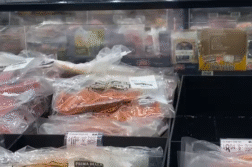ORLANDO, Fla. (Ivanhoe Newswire) – Ninety-five percent of diet attempts will end in failure. For those who do reach their goals, most will regain the lost weight in just one to five years! But what about the few who succeed and then keep on going? What is their secret?
A successful diet becomes a positive lifestyle choice, not a temporary fix. Find your long-term motivator, and remind yourself of it each day. Not something simple like, “I want to lose weight.” Think about living longer, being there to support your loved ones. And this may seem obvious, but make sure you’re eating what you want to eat. If you hate salad, don’t eat salad! You have more than one option when it comes to eating healthy.
Rachel Franklin, MD, at OU Physicians told Ivanhoe, “What really works is adopting something that you can stick with that will keep you healthy for a long time.”
Take gradual steps. Aim to replace unhealthy habits one at a time. Start by swapping your daily soda for water, this includes cutting out diet soda too!
“When you drink something sweet the brain expects that sugar rush. If it doesn’t get the sugar rush it may seek actual sugar to replace those calories,” Franklin said.
After two weeks of this, move on to cutting your carb intake by increasing your vegetables!
Focus on your weaknesses and replacing them. Do you crave candy? Try dark chocolate instead. Remember, even if you’re eating healthy, you can still overeat. Try the rule of eating until you feel 80 percent full, then take a break. Your stomach needs 20 minutes to send a message to your brain that you are full!
To keep unhealthy foods out of the house, write up your grocery list, eat before you head out to food shop, and stick to your list! When you do indulge, just burn it off. Don’t beat yourself up about it, nobody is perfect!
Contributor(s) to this news report include: Gabriella Battistiol, Producer; Roque Correa, Videographer and Editor.
To receive a free weekly email on Smart Living from Ivanhoe, sign up at: http://www.ivanhoe.com/ftk



